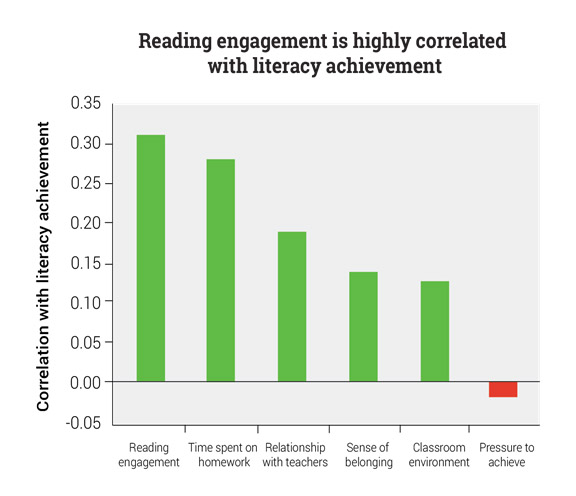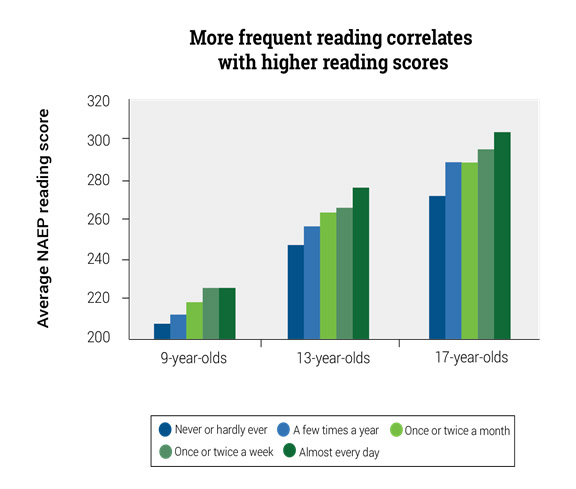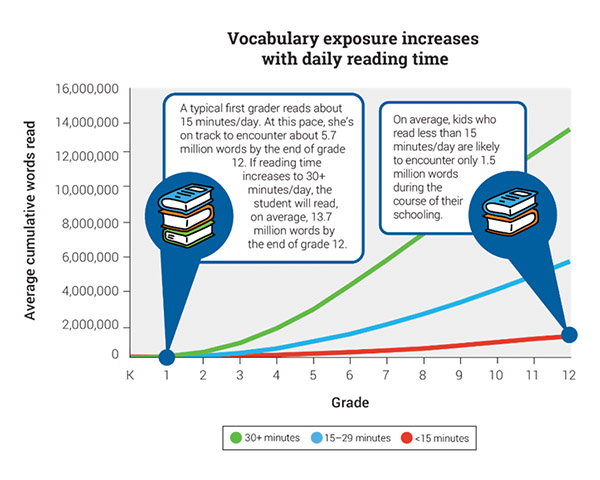Reading Engagement
This week, I continue my thoughts and research on the “mantra” of getting your kids to read more, not just for school but for the pure enjoyment and benefits they will accrue. At The Reading Ranch our motto is “We make reading FUN“, we want our students to have fun and learn to love reading. The following information and research shows us how very important reading is and if something this important is FUN, how much success could we achieve? Interesting thought!
For students within the United States, reading practice may be more important than socioeconomic status—it may possibly be the most more important factors for academic success.
Looking at PISA scores for students in the U.S., notice that reading engagement has a higher correlation with reading literacy than any other factor! In addition, a regression analysis showed achievement went up across all measures of reading literacy performance when reading engagement increased.

In 2013, the National Center for Education Statistics (NCES) compared students’ National Assessment of Educational Progress (NAEP) reading scores with their reading habits. The more frequently students read for fun and enjoyment, the higher their scores were.
What is especially interesting about the NAEP results is that the correlation between reading frequency and reading scores was true for all age groups and the score gaps increased across the years.
This seems to run contrary to the commonly held wisdom that reading practice is most important when children are learning how to read but less essential once fundamental reading skills have been acquired. We might even hypothesize that learning to enjoy reading at a young age becomes a habit which pays dividends for years to come.
Drastic declines in reading practice
The graph below shows the dramatic decline of reading rates over the last few decades. Children of all ages are reading dramatically less for fun and pleasure than students were in 1984. The NAEP study did not attempt to address the causes of the dramatic decline but this statistic is especially troubling. If this trend continues what will this mean for students in the future and our society as a whole? The lack of reading could mean a significant loss of context in critical thinking situations which will significantly hinder the progress and academic achievement of students.
In 1984, NAEP results showed the vast majority of 9-year-olds read for fun once or more per week, with more than half reporting reading almost every day. Only one in five reported reading two or fewer times per month. By 2012, 25% of all 9-year-olds were reading for pleasure fewer than 25 days per year. In older students, the gap has widened even further. Less than 40% of 17-year-old students read for pleasure more than 1x/week!
There are many other factors that contribute to achievement, such as quality instruction, access to reading materials, and family background. The consistent connection between time spent reading per day and reading growth cannot is the most crucial and easiest to rectify.
If reading practice is linked to reading growth and achievement, then it follows that low levels of reading practice should correlate to low levels of reading performance and high levels of reading practice should connect to high levels of reading performance. This pattern is precisely what we see in student test data.
Why are we seeing the greatest gaps and the greatest declines in the oldest students? Although many different factors are likely at play, one of them might be that the effects of reading practice are cumulative over a student’s schooling, especially when it comes to vocabulary.
The long-term effects of reading practice
What do these statistics mean to a student as they move through school?
Based on research by Renaissance Learning. Between kindergarten and twelfth grade, students who averaged less than 15 minutes of reading per day are likely to be exposed to only 1.5 million words, however students with an average daily reading time of 30+ minutes are projected to encounter 13.7 million words, over 9x the words, and vocabulary of the students who read less than 15 minutes per day!




